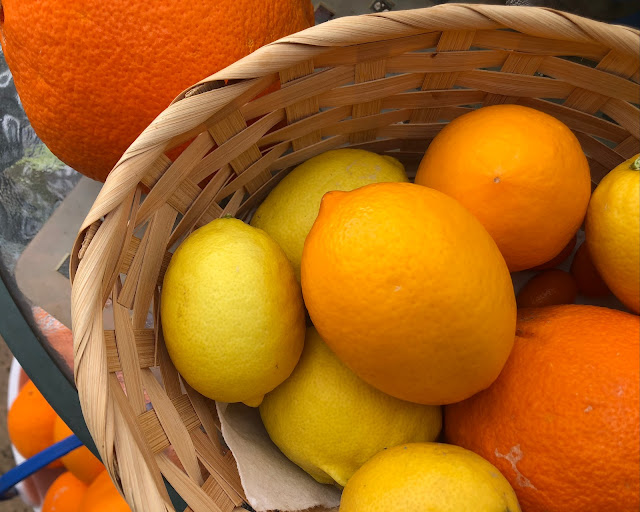
Sacramento region under freeze warning through Friday

|
|
Harvest ripe citrus ahead of a long period of frost. Icy citrus can turn to mush when the sun warms it. (Photo: Kathy Morrison)
|
Are you ready for a big chill? Sacramento is about to get cold!
Widespread frost is forecast for the Sacramento region on Wednesday, Thursday, Friday and Saturday mornings. Foothill communities could see overnight lows in the mid-20s.
A freeze warning will be in effect from 2 a.m. Wednesday to 9 a.m. Friday for all of the Sacramento Valley and northern San Joaquin Valley as well as the Mother Lode region and Delta communities, says the National Weather Service. Thursday morning before dawn is expected to see the lowest temperatures.
Expect “widespread areas of sub-freezing temperatures in the overnight and early morning hours,” says the weather service. “Frost and freeze conditions could kill crops, and other sensitive vegetation. Make sure pets have shelter from the cold. … Take steps now to protect tender plants from the cold.”
What makes this frost so dangerous is timing – both in duration and when. Areas could stay at or below freezing for six to eight hours, says the weather service. That’s enough chill to seriously damage or kill sensitive plants or seedlings.
The “when” part could have major consequences on harvests later this year. Many fruit and nut trees have already started blooming. This freeze could kill flower buds. The same goes for new growth on grapevines.
Also, honeybees need temperatures above 55 degrees to do their work. When blossoms open in frosty weather, they don’t get fertilized. This frost could be particularly rough on almond growers.
Harvest ripe citrus before the frost hits. Such long, cold periods can freeze oranges and lemons; when the sun warms that icy citrus, it will turn to mush.
Here are more frost tips:
* Deep-water sensitive plants; moisture in the soil can elevate temperatures just enough to prevent frost damage. The exception are succulents and cacti; pre-watering before frost can actually make damage worse.
* Frost injury occurs when ice crystals form on leaf surfaces and draw moisture out of the leaf. The damage from dehydration is what causes frost burn.
* Before the sun goes down, cover your sensitive plants with frost cloth, blankets or cloth sheets (not plastic) so radiant heat will help keep them cozy.
* Remember to uncover plants during the day (especially if it’s sunny) or they can be smothered by their frost protection.
* Move succulents in containers indoors or to sheltered areas if possible.
* Citrus trees (particularly young trees) tend to be susceptible to frost damage. Limes are the most frost-tender. Make sure they get some protection before frost hits.
* Wrap trunks of young citrus trees to insulate them from frost.
* Holiday lights – the old-fashioned kind that get hot, not LEDs – can help keep plants warm, too. Wrap a string of lights around the trunk and branches. Keep the lights on all night.
* Don’t overprotect. Plants are more frost-resistant if they’ve experienced some cold weather and winter hardening.
* If frost damage occurs, wait until March or April to prune off browned branches. That injured area will help protect the rest of the plant from additional frost burn.
Comments
0 comments have been posted.Sacramento Digs Gardening to your inbox.
Sites We Like
Garden Checklist for week of July 21
Your garden needs you!
* Keep your vegetable garden watered, mulched and weeded. Water before 8 a.m. to reduce the chance of fungal infection and to conserve moisture.
* Feed vegetable plants bone meal, rock phosphate or other fertilizers high in phosphate to stimulate more blooms and fruiting. (But wait until daily high temperatures drop out of the 100s.)
* Don’t let tomatoes wilt or dry out completely. Give tomatoes a deep watering two to three times a week.
* Harvest vegetables promptly to encourage plants to produce more. Squash especially tends to grow rapidly in hot weather. Keep an eye on zucchini.
* Pinch back chrysanthemums for bushy plants and more flowers in September.
* Remove spent flowers from roses, daylilies and other bloomers as they finish flowering.
* Pinch off blooms from basil so the plant will grow more leaves.
* Cut back lavender after flowering to promote a second bloom.
* It's not too late to add a splash of color. Plant petunias, snapdragons, zinnias and marigolds.
* From seed, plant corn, pumpkins, radishes, winter squash and sunflowers.